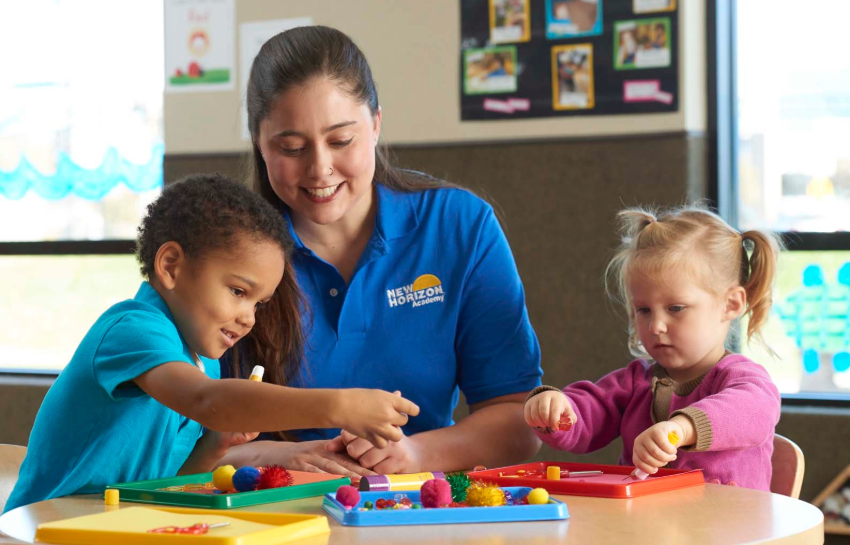Public vs. Private Pre-K in the U.S.: Key Differences and How to Choose the Right One
Public vs. Private Pre-K in the U.S.: Key Differences and How to Choose the Right One
Choosing a Pre-K (pre-kindergarten) program is an important decision for parents, as it lays the foundation for a child’s education. In the U.S., families can choose between public Pre-K and private Pre-K, each offering unique benefits. This guide explores the differences, pros and cons, and key factors to consider when selecting the right option for your child.
1. Key Differences Between Public and Private Pre-K
| Feature | Public Pre-K | Private Pre-K |
|---|---|---|
| Cost | Free or low-cost (state-funded) | Tuition-based, varies by school |
| Eligibility | Based on income, location, or special needs | Open enrollment for all families |
| Curriculum | Follows state guidelines | Can be customized (Montessori, Reggio Emilia, religious-based, etc.) |
| Class Size | Typically larger | Smaller classes with lower student-teacher ratios |
| Teacher Qualifications | Certified early childhood educators | Varies, but often highly qualified teachers |
| Hours | Follows school district schedule | Offers full-day, part-time, or extended-hour options |
| Extracurriculars | Limited due to state funding | More options like language, arts, sports, and STEM programs |
2. Public Pre-K: Overview and Benefits
What is Public Pre-K?
Public Pre-K programs are state-funded early education programs designed to prepare 3- and 4-year-olds for kindergarten. These programs are usually part of public school systems and may have eligibility requirements.
Pros of Public Pre-K
✔ Free or low-cost, making it an affordable option for families. ✔ Follows state-approved curriculum aligned with K-12 education. ✔ Teachers are required to have early childhood education certification. ✔ Encourages socialization with diverse groups of children.
Cons of Public Pre-K
✘ Limited availability—not all states offer universal Pre-K. ✘ May have income, residency, or lottery-based enrollment restrictions. ✘ Larger class sizes can lead to less individualized attention.
3. Private Pre-K: Overview and Benefits
What is Private Pre-K?
Private Pre-K programs are independently operated, offering flexible curriculums, smaller class sizes, and premium learning experiences. These schools often follow specialized educational methods such as Montessori, Reggio Emilia, or faith-based programs.
Pros of Private Pre-K
✔ More customized curriculum options to fit a child’s learning style. ✔ Smaller class sizes provide individualized attention. ✔ Flexible scheduling with half-day, full-day, and extended-hour programs. ✔ Often includes extracurricular activities like art, music, and language learning.
Cons of Private Pre-K
✘ Higher tuition costs, which can be expensive. ✘ Admission may be competitive, requiring interviews or waitlists. ✘ Less regulation compared to public Pre-K programs.
4. How to Choose the Best Pre-K for Your Child
1. Consider Your Budget
- If affordability is a concern, check if you qualify for state-funded public Pre-K.
- Compare private school tuition and financial aid options.
2. Assess the Curriculum
- Public Pre-K follows structured, state-approved learning.
- Private Pre-K may offer Montessori, bilingual education, religious instruction, or play-based learning.
3. Check Class Size & Teacher Credentials
- Public Pre-K tends to have larger class sizes.
- Private Pre-K may offer a lower student-to-teacher ratio.
4. Look at School Hours & Convenience
- Public Pre-K operates on a school district calendar.
- Private Pre-K may offer extended care for working parents.
5. Visit the School & Talk to Teachers
- Attend open house events or schedule a tour.
- Observe classroom interaction and ask about teacher training and teaching philosophy.
Final Thoughts
Both public and private Pre-K programs offer excellent early learning opportunities, but the best choice depends on your child’s needs and family priorities. Whether you prioritize affordability, curriculum flexibility, or small class sizes, researching options and visiting schools will help you make the best decision.
SEO Keywords: public vs private Pre-K USA, choosing the best Pre-K, benefits of private Pre-K, free Pre-K near me, preschool options for toddlers, Montessori vs traditional preschool, early childhood education choices
By considering factors like cost, curriculum, and teacher quality, you can find the best Pre-K experience to support your child’s early learning journey!
amazon best seller






Comments